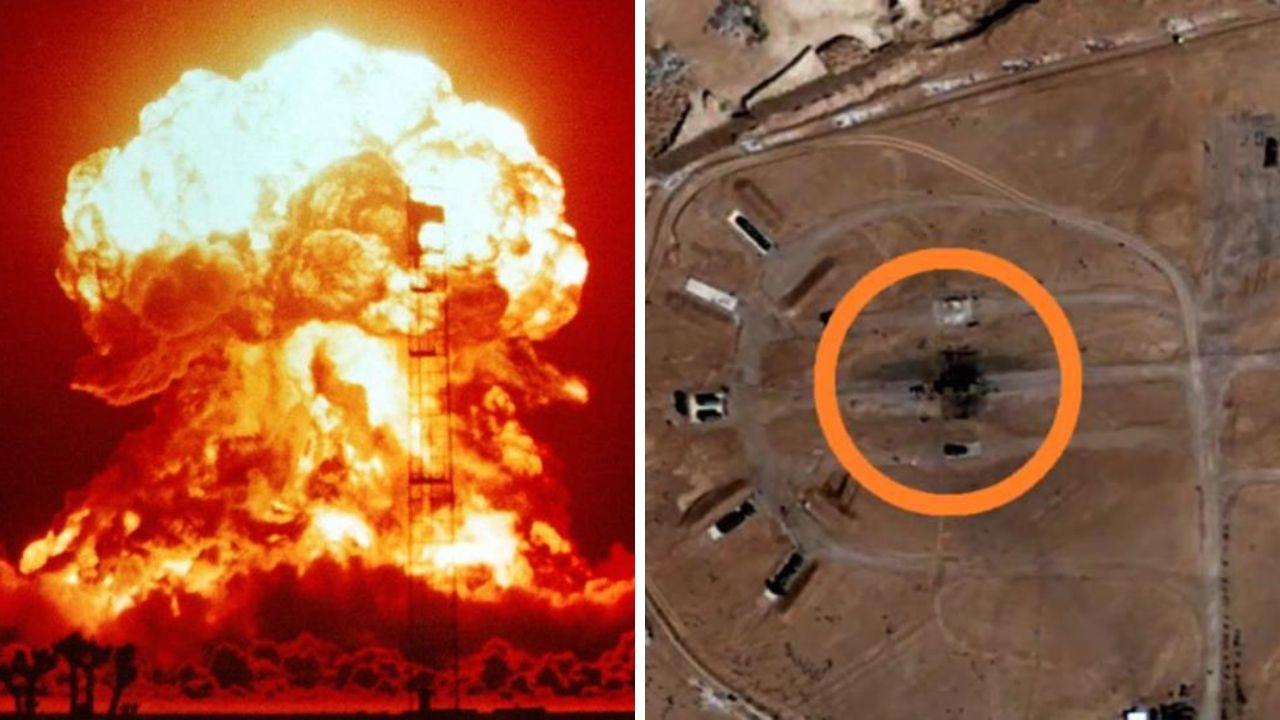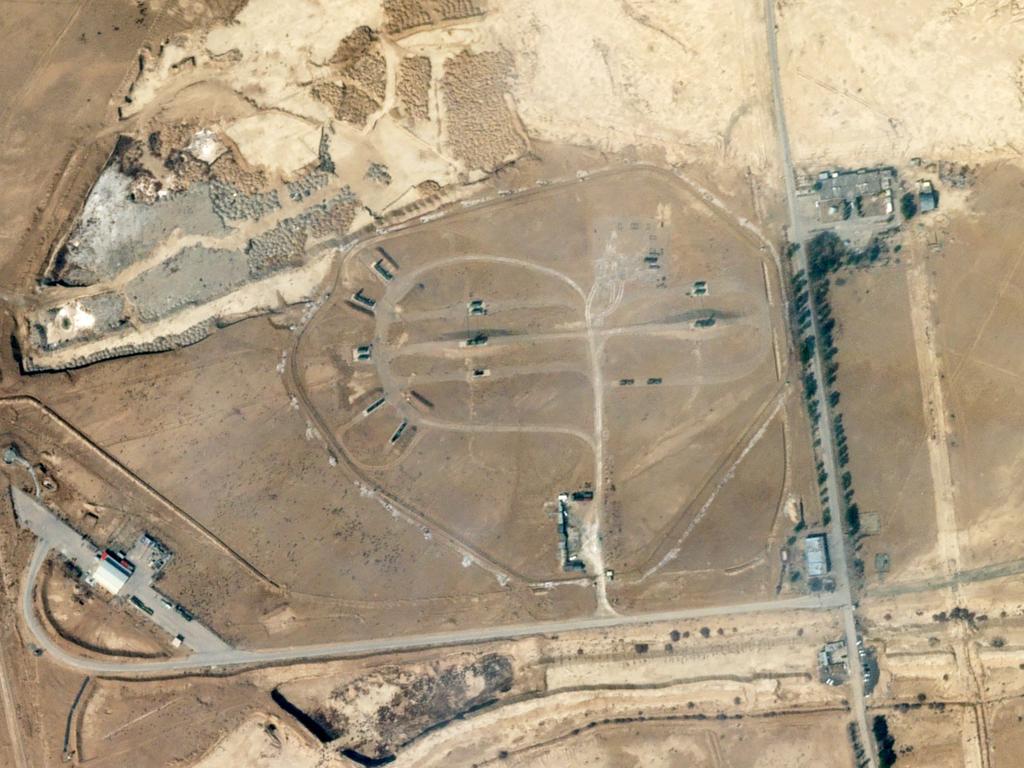‘Weeks, not months’: Iran’s scary nuclear plan
Iran is “weeks, not months” away from a landmark moment that will see them so much closer to nuclear armament.

Iran is “weeks, not months” away from producing enough enriched uranium to assemble a nuclear bomb, the UN warns.
Chief of the International Atomic Energy Agency (IAEA) Rafael Mariano Grossi told European media this week that Iran’s moves to deny inspectors access to its facilities while ramping up production is “raising eyebrows” about the religious-state’s motives.
The city at the heart of Iran’s nuclear program, Isfahan, was targeted by an Israeli retribution attack earlier this month following a failed missile and drone assault from Iran. That was itself in retribution for an Israeli attack on an Iranian embassy in Syria which killed several military commanders.

Iran has dismissed the effects of the Israeli strike, part of which appears to have targeted a radar system positioned to defend part of the nuclear research operation.
Tehran insists its refined uranium program is for medical use only.
But the nation behind terror and insurrection groups across the Middle East is once again preventing the IAEA from tracking the movement of uranium through its entire supply chain, leaving Tehran’s true objectives as “a matter of speculation”.
“That does not mean that Iran has or would have a nuclear weapon in that space of time,” Mr Grossi explained. “A functional nuclear warhead requires many other things independently from the production of the fissile material.”

Nuclear warheads need a particularly potent isotope, uranium-235. But this normally makes up just 7 per cent of naturally sourced deposits concentrated as yellowcake.
A bomb needs it at concentrations of more than 20 per cent to achieve critical mass.
But the more enriched the uranium, the smaller (and lighter) a missile warhead becomes. And enrichments of more than 90 per cent are classified as “weapons-grade” as it has no other practical use.
The IAEA reported in November that Iran had achieved sustained enrichment levels of up to 60 per cent.
In the balance
“I believe that this normalisation of talk about nuclear weapons, dropping nuclear weapons, getting nuclear weapons is absolutely deplorable,” Mr Grossi told the German DW news service.
Israel is believed to have had a secret nuclear weapons program in operation since the 1960s. And two members of the nation’s far-right coalition government have demanded the use of its “Jericho missile” against Palestinians in the Gaza Strip.
Iran’s ability to produce a nuclear weapon would dramatically reduce Israel’s military dominance over its neighbours through the same “mutually assured destruction” (MAD) concept that kept the US and Soviet Union from open conflict during the Cold War.
But it adds a weapon of mass destruction to the ballistic missiles the religious extremist state has successfully developed over recent decades.

“What I am interested in is the dialogue between us, the IAEA and Iran, because there are many things that need to be clarified, and it is for this that we are going to be travelling to Tehran soon. I will be there to try to put these things back on track if they want to be believed.”
But Tehran’s ongoing lack of transparency over what it was doing with its enriched uranium had produced “lots of question marks”.
The fact that it has dramatically improved its uranium enrichment levels has heightened concerns in the United States.
“Iran has no credible civilian justification for enrichment up to 60 per cent,” a Department of State spokesperson said in December. “Iran’s nuclear escalation is all the more concerning at a time when Iran as well as Iran-backed militant groups and Iran’s proxies continue their dangerous and destabilising activities in the region.”
Have a little faith?
Iran’s supreme leader Ayatollah Ali Khamenei in 2003 issued a verbal fatwa – a religious decree – forbidding the production or use of any weapon of mass destruction.
He reportedly said the prospect of nuclear war went against “the spirit of Islam”.
This was referred to in a written submission to the IAEA in 2005.
And weapons-grade uranium-235 does have some limited medicinal use.

Meanwhile, Tehran is pressing ahead with plans to convert the nation’s electricity production from hydrocarbon gas to the stable output of nuclear generators.
The country has one operational nuclear power plant, with another under construction. Up to four additional projects have been initiated.
The Isfahan nuclear production plant is centred on three small research reactors supplied by China in the 1990s.
Its stated purpose is to produce fuel rods for civilian reactors.
But buried beneath a mountain in the desert surrounding the city is the Natanz uranium enrichment facility. What the centrifuges positioned at this site are producing is at the heart of the Atomic Energy Agency’s concerns.
And Grossi said traces of enriched uranium had been detected at sites “that were not supposed to be nuclear sites”.
Enrichment involves a complex process of converting the uranium into a gas while passing through powerful centrifuges.
This operation has been targeted by suspected US and Israeli espionage operations. In 2010, a tailored computer virus sent its centrifuges spinning to destruction.
A 2015 agreement lifted a range of international sanctions against Tehran in return for verifiable limits on its restarted nuclear research and enrichment activities.
However, President Donald Trump abandoned the deal in 2018. And another suspected espionage attack in 2021 cut power to the facility, once again likely damaging sensitive equipment.
“Attacking nuclear facilities is an absolute no-go,” Mr Grossi added of speculation that Israel was once again planning to destroy Iran’s nuclear industry.
Jamie Seidel is a freelance writer | @JamieSeidel






